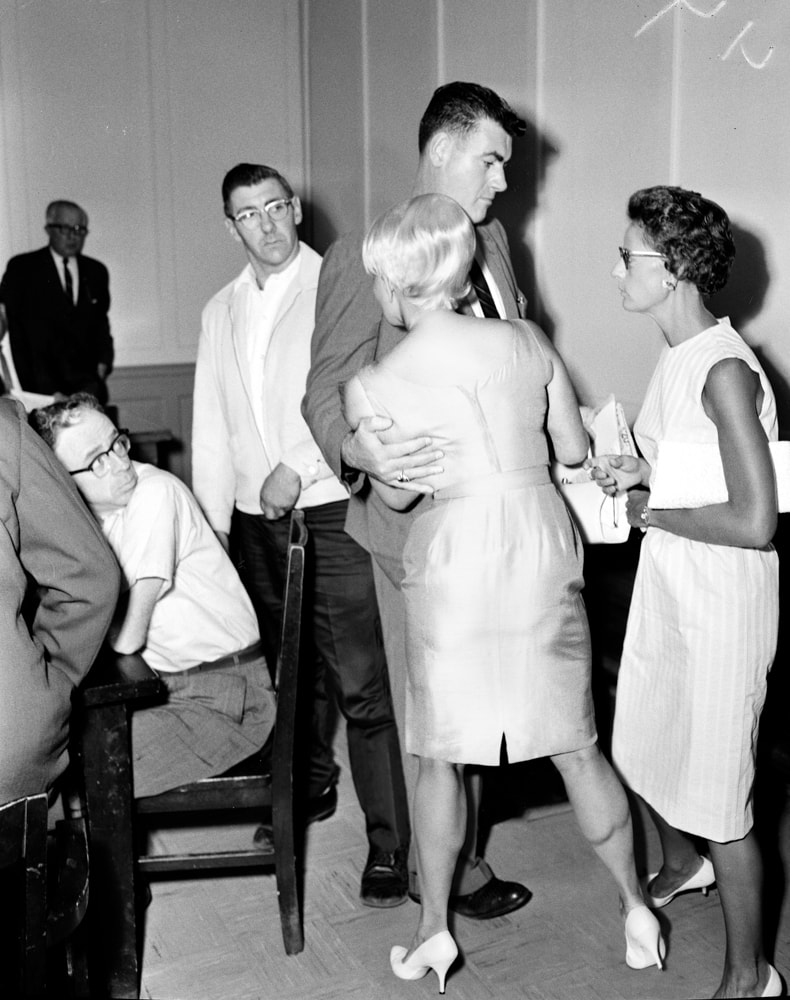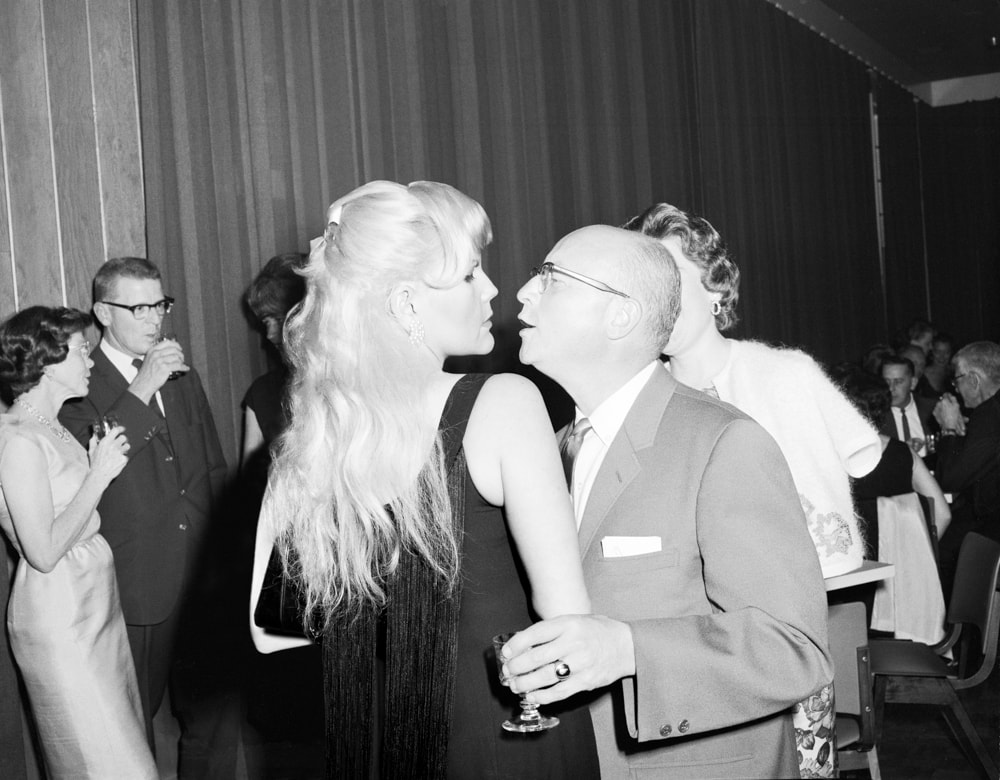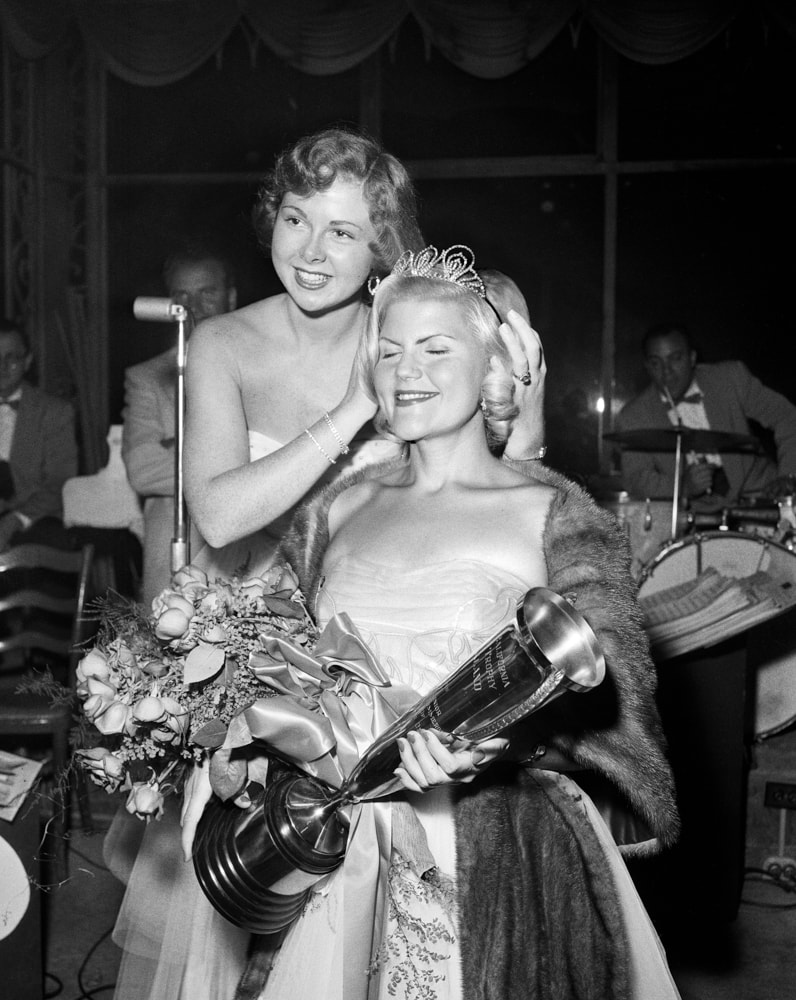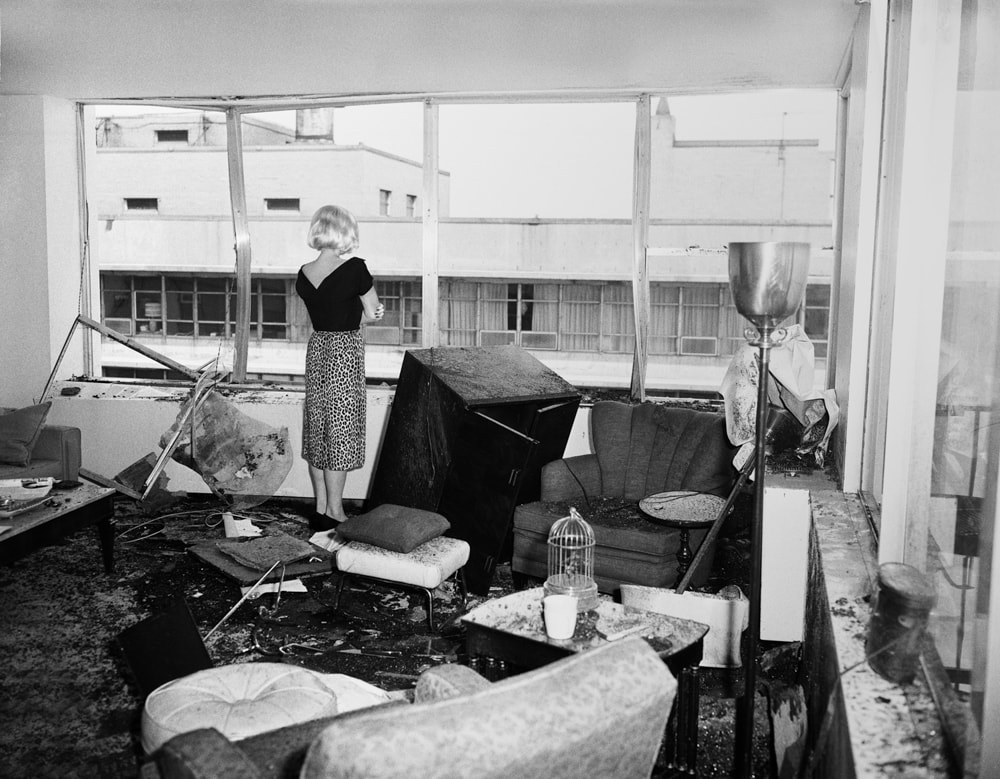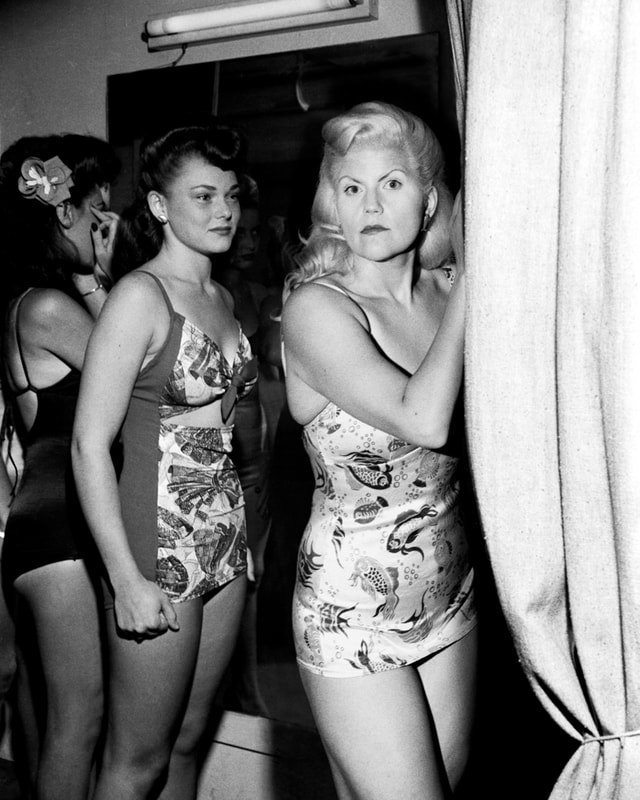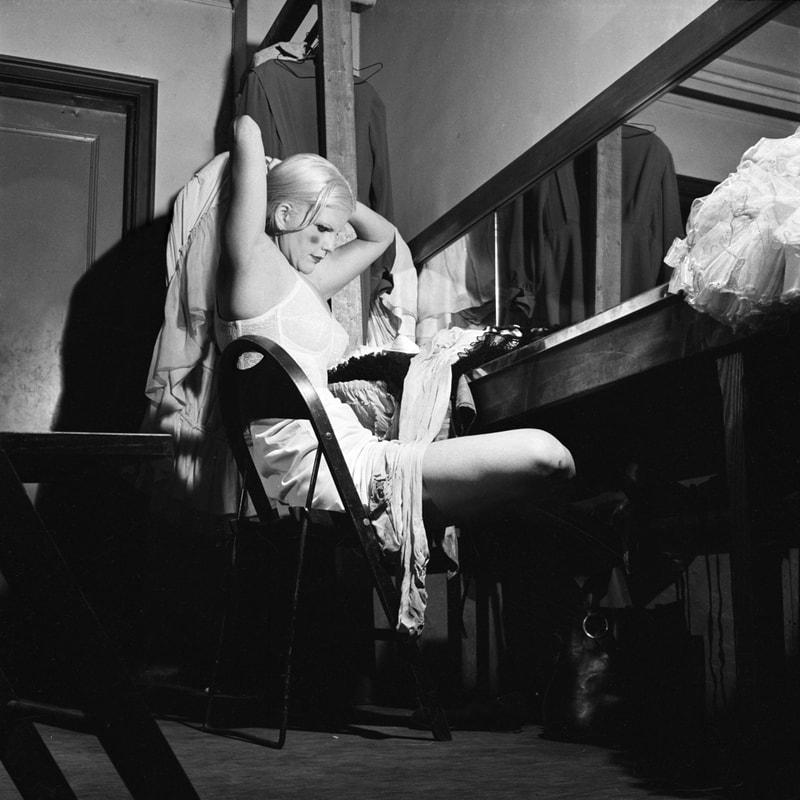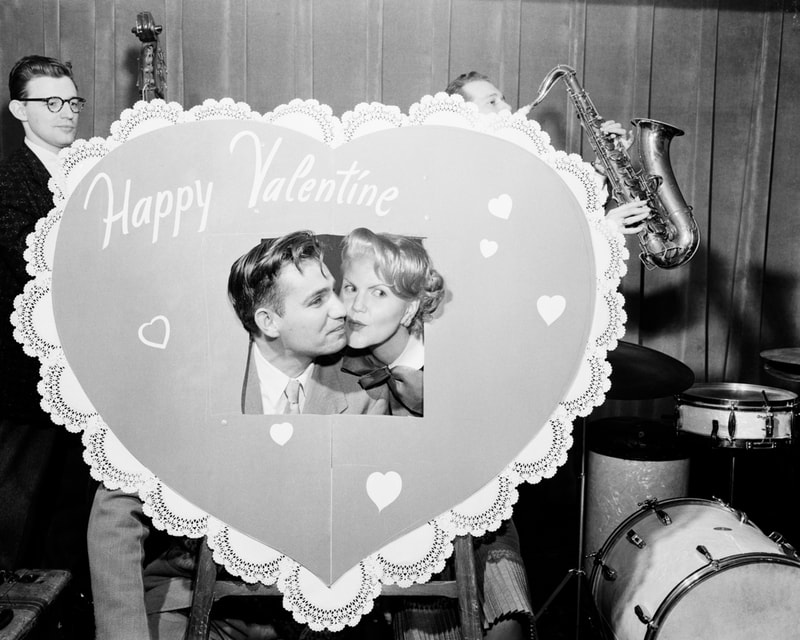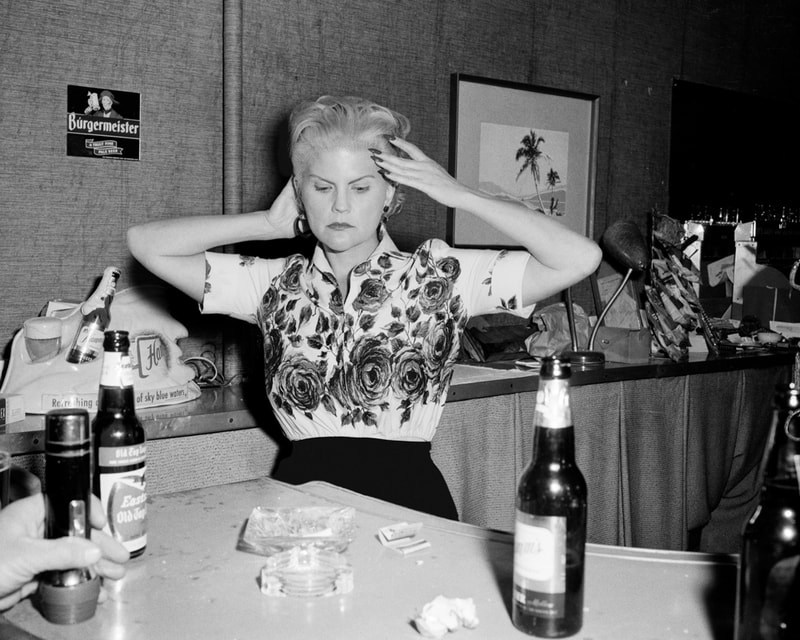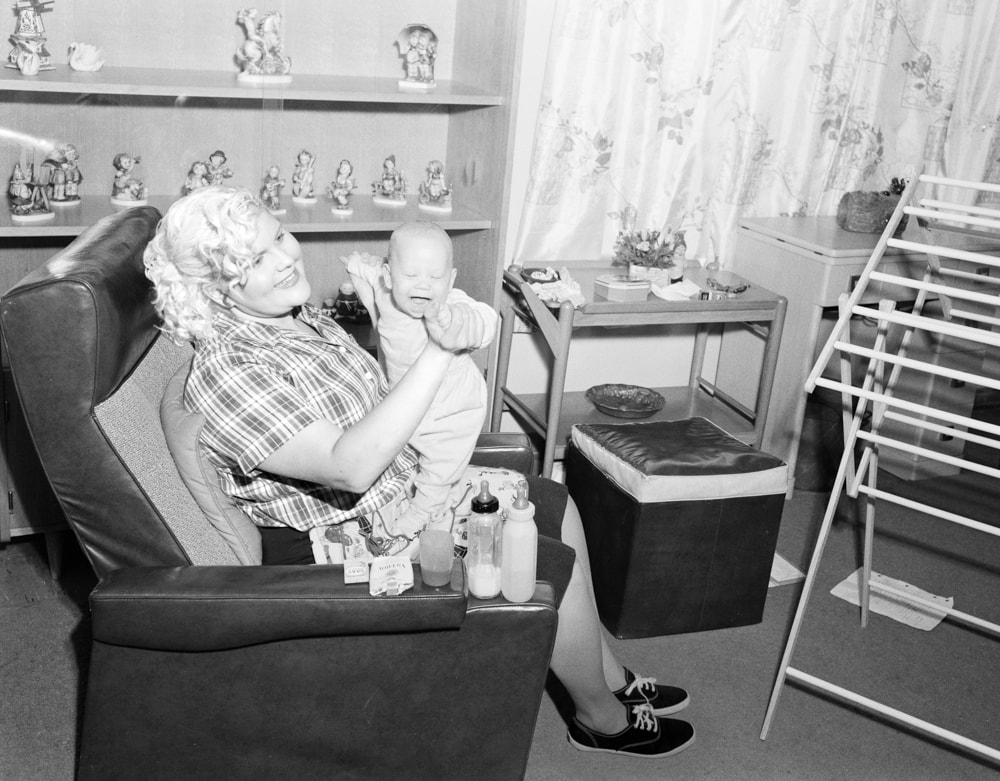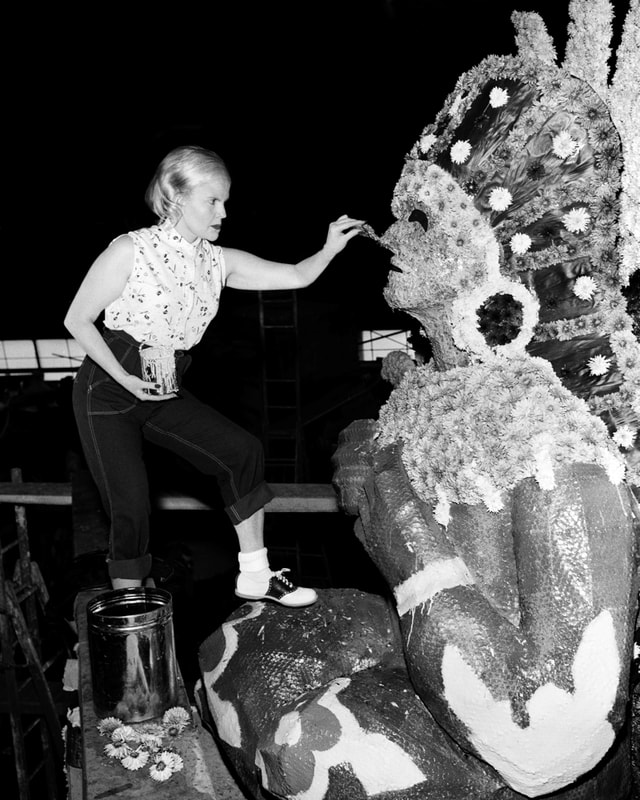Revising History
Revising History is made by replacing the entire central figure in vernacular photographs with images of myself. I intend the work to engage the audience in a conversation about how historical depictions of women, rife with aesthetically pleasing glamour, are used to help us idealize the American past. Using performative techniques and stagecraft, I transform into a protagonist– navigating her societal expectations sardonically– in order to draw a sharp parallel with the culture of discrimination women still experience today.
The captivating aesthetic present in post-war American photography encourages us to believe that it was a time of civility when it was actually a time of discrimination and gender inequality. A woman’s future, both personally and professionally, was usually determined by her beauty and physical presentation, rather than her skills or qualifications. Yet, the visuals of the post-war era act as a mask–covering up and glossing over a past that is more convenient to forget using aesthetic appeal. I utilize those visuals to draw my audience into a conversation about the narrative we have devised regarding the American past.
Using an elaborate performative process, I become the subject of the photograph. I replace the original woman in the image with an image of my entire body. The work relies on costuming, physical improvisation, and highly detailed studio photography work, rather than on digital manipulation. I select period-correct vintage attire from my clothing archive for each image. I then transmogrify my visual appearance using hair and makeup techniques learned from vintage beauty manuals. I become a characterization of the person who was present the moment the image was captured. My end result appears as a record of time and place yet crafts its own reality, myth, and falsehood, not unlike a traditionally made photograph.
By presenting photographs that are transmuted from their original intention, I foster a conversation about how historical depictions of women are used to help us idealize our past. I intend the series to engage the audience in a conversation about the way we interpret the media, record personal memories, and establish a collective history.
The captivating aesthetic present in post-war American photography encourages us to believe that it was a time of civility when it was actually a time of discrimination and gender inequality. A woman’s future, both personally and professionally, was usually determined by her beauty and physical presentation, rather than her skills or qualifications. Yet, the visuals of the post-war era act as a mask–covering up and glossing over a past that is more convenient to forget using aesthetic appeal. I utilize those visuals to draw my audience into a conversation about the narrative we have devised regarding the American past.
Using an elaborate performative process, I become the subject of the photograph. I replace the original woman in the image with an image of my entire body. The work relies on costuming, physical improvisation, and highly detailed studio photography work, rather than on digital manipulation. I select period-correct vintage attire from my clothing archive for each image. I then transmogrify my visual appearance using hair and makeup techniques learned from vintage beauty manuals. I become a characterization of the person who was present the moment the image was captured. My end result appears as a record of time and place yet crafts its own reality, myth, and falsehood, not unlike a traditionally made photograph.
By presenting photographs that are transmuted from their original intention, I foster a conversation about how historical depictions of women are used to help us idealize our past. I intend the series to engage the audience in a conversation about the way we interpret the media, record personal memories, and establish a collective history.




